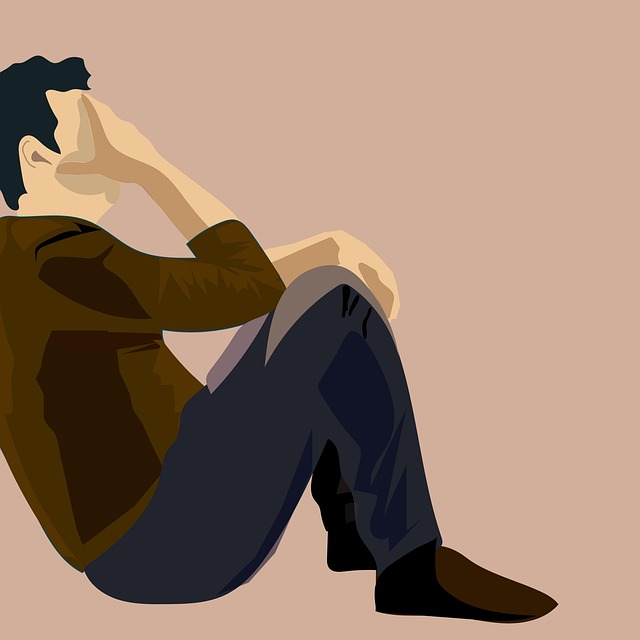Adolescent depression requires early identification and tailored depression treatment programs. Recognizing key symptoms like persistent sadness or changes in daily functioning is crucial. Programs offer diverse approaches, including Cognitive Behavioral Therapy (CBT), Interpersonal Therapy (IPT), medication-assisted treatments, and support groups. CBT focuses on modifying negative thought patterns, while IPT enhances relationships and family involvement. Support groups provide safe spaces for connection and shared understanding. Complementary practices like physical activity, balanced diets, and mindfulness promote overall well-being. Integrating these strategies effectively manages teen depression, empowering them to take charge of their mental health.
Depression among adolescents is a growing concern, yet often overlooked. Understanding adolescent depression and its signs is the first step towards providing effective support. This article explores comprehensive depression treatment programs tailored for teens, delving into various therapies, from Cognitive Behavioral Therapy (CBT) to interpersonal approaches. We also discuss the power of peer support groups and lifestyle changes as complementary strategies. By arming parents and caregivers with knowledge, we can navigate this mental health challenge together.
Understanding Adolescent Depression: Recognizing the Signs

Adolescent depression is a serious mental health issue that requires early identification and appropriate intervention. Recognizing the signs is crucial in ensuring that young individuals receive the support they need. Depression in adolescents can manifest differently from adult symptoms, often presenting as persistent feelings of sadness, irritability, or a lack of interest in activities once enjoyed. Changes in sleep patterns, appetite, energy levels, and concentration are also common indicators.
Behavioral shifts, such as withdrawal from social interactions, academic decline, and increased risk-taking behaviors, can be red flags. Additionally, adolescents might express feelings of worthlessness, guilt, or difficulty thinking clearly. Understanding these signs is essential for parents, caregivers, and educators to initiate conversations and encourage help-seeking behaviors, ultimately guiding them towards effective depression treatment programs.
Types of Depression Treatment Programs for Teens

Depression treatment programs for teens come in various forms, each designed to address specific needs and symptoms. One common approach is cognitive behavioral therapy (CBT), which helps adolescents identify and change negative thought patterns and behaviors contributing to their depression. This therapeutic method has been extensively studied and proven effective in improving mood and overall well-being.
Another popular option is interpersonal or social rhythm therapy, focusing on stabilizing daily routines, improving relationships, and enhancing social connections. This type of depression treatment program aims to help teens build a structured life, which can be particularly beneficial for those struggling with academic or social challenges. Additionally, certain medication-assisted treatments combine antidepressant medications with psychotherapy for comprehensive care.
Cognitive Behavioral Therapy (CBT): A Step-by-Step Approach

Cognitive Behavioral Therapy (CBT) is a structured and effective approach for adolescents dealing with depression. This evidence-based therapy focuses on identifying and changing negative thought patterns and behaviors that contribute to depressive symptoms. Through CBT, teens learn to challenge distorted thinking, gain coping strategies, and gradually rebuild their emotional resilience. The process involves setting specific goals, learning relaxation techniques, and regularly tracking progress.
In a step-by-step manner, CBT guides adolescents through several stages. It begins with assessing current thoughts, feelings, and behaviors. Next, the therapist helps the teen identify negative thought cycles and distorted beliefs, often targeting areas like self-worth, future predictions, or interpretation of events. This is followed by challenging those thoughts through logical analysis and evidence gathering. As treatment progresses, CBT teaches practical coping strategies for managing depressive symptoms, enhances problem-solving skills, and encourages engaging in activities once avoided due to depression. The therapy concludes with consolidating achievements, maintaining newfound insights, and preventing relapse, ultimately aiming to equip adolescents with lifelong tools for mental well-being and effective depression treatment programs.
Other Effective Therapies: Interpersonal and Family-Focused Strategies

Interpersonal therapy (IPT) is a well-regarded approach for adolescent depression, focusing on improving relationships and social skills. This type of therapy helps teens navigate and resolve interpersonal problems, such as conflicts with peers or family members, which can contribute to their depressive symptoms. By enhancing communication and social support networks, IPT empowers adolescents to build healthier connections and cope more effectively with life’s challenges.
Family-focused strategies within depression treatment programs also prove beneficial. Involving family members in therapy sessions allows for a better understanding of the teen’s experiences and enables the entire family to learn coping mechanisms. This collaborative approach not only supports the adolescent but also fosters a more supportive and nurturing family environment, which is crucial for long-term recovery.
Support Groups and Peer Connection: Building a Network of Support

Support groups play a pivotal role in depression treatment programs for adolescents, offering a safe and non-judgmental space where young individuals can connect with peers facing similar challenges. These groups facilitate open discussions, allowing members to share their experiences, fears, and coping strategies. By fostering peer connection, adolescents gain a sense of belonging and understanding, which is particularly crucial during turbulent times.
In these supportive environments, teens can learn from one another, discover effective ways to manage their symptoms, and build resilience. Peer support networks can enhance the overall effectiveness of depression treatment by providing continuous encouragement, empathy, and a fresh perspective. This interconnectedness among peers can empower adolescents to take control of their mental health journey and cultivate lasting coping mechanisms.
Lifestyle Changes and Self-Care: Complementary Approaches to Depression Treatment

Lifestyle changes and self-care practices play a significant role in complementary approaches to depression treatment for adolescents. Incorporating regular physical activity, maintaining a balanced diet, and adhering to consistent sleep schedules can significantly impact mood and overall well-being. These simple yet powerful habits help regulate brain chemistry, boost serotonin levels, and promote better mental health. Additionally, engaging in stress management techniques like mindfulness meditation or yoga can provide adolescents with valuable tools to navigate their emotions and reduce symptoms of depression.
Self-care also involves setting boundaries, practicing good hygiene, and cultivating social connections. Encouraging adolescents to connect with supportive peers, engage in activities they enjoy, and prioritize downtime can enhance their sense of belonging and self-worth. Depression treatment programs that integrate lifestyle changes and self-care strategies often yield more positive outcomes, empowering young individuals to take an active role in managing their mental health effectively.
